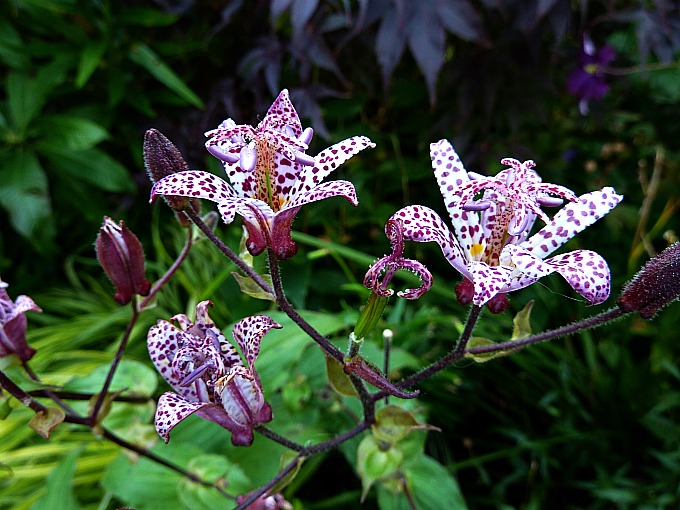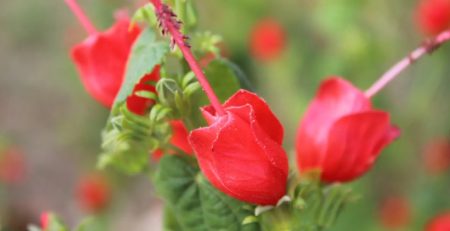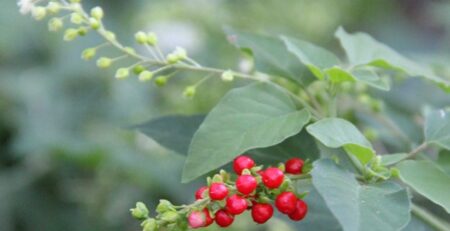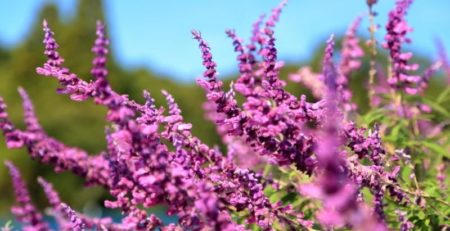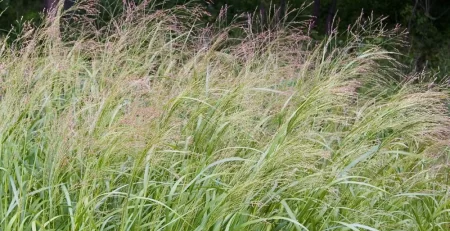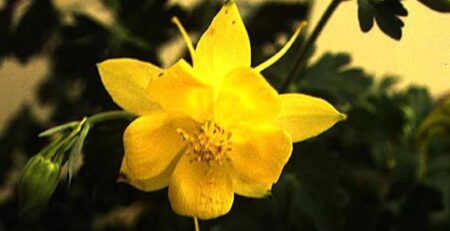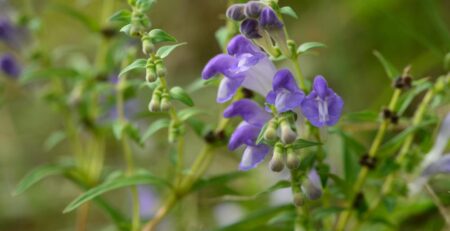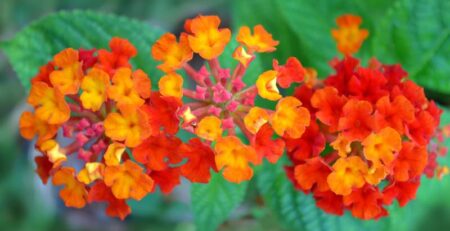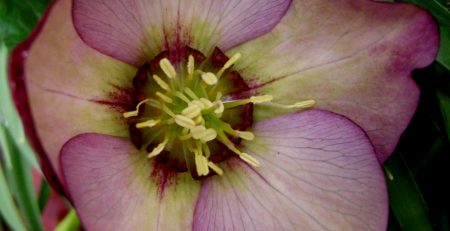Tricyrtis hirta, Toad Lily
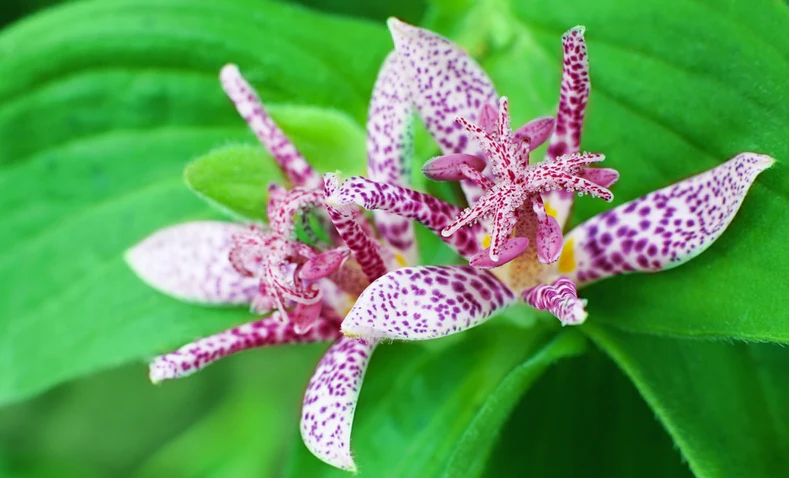
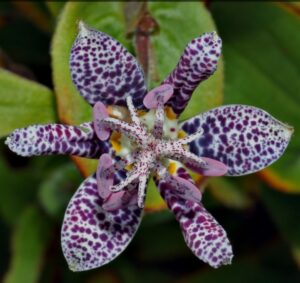

Botanical Name: Tricyrtis hirta
Common Name: Toad Lily, Hairy Toad Lily, Japanese Toad Lily
Synonyms:
Category: Perennial
Family: Liliaceae
Lifecycle: Perennial
USDA Symbol: TRHI8
Hardiness Zone North: 4A (-30 to -25F)
Hardiness Zone South: 8B (15 to 20 F)
Sun Requirement: Partial Shade (2-4 hours of sun per day)
Sun Requirement (Alt): Full Shade (little or no direct sun)
Water Requirement: Medium
Growth Rate: Moderate
Maintenance: Medium
Plant Adult Height: 2-3 ft.
Plant Adult Spread: 1-2 ft.
Plant Spacing: 1-2 ft.
Soil Preference: Adaptable
Soil pH Preference: Slightly Acidic (6.1-6.5)
Propagation: Division, Seed, Stem Cutting
Attracts: Bees, Butterflies, Moths
Resists: Deer
Tolerates: Freeze, Drought, Clay Soil, Heavy Shade, Wet Soil, Heat
Description: The Toad Lily, a captivating and exotic perennial, thrives in shaded gardens due to its affinity for moist and well-drained soils rich in organic matter. With origins in Japan, this plant is acclaimed for its unique, orchid-like blossoms that emerge from late summer to fall. The blooms, often speckled or dotted in shades of lavender, purple, and white, add a stunning visual interest to shadowy garden corners. Toad Lilies excel in woodland gardens, borders, and shaded pathways, where their intriguing appearance provides a surprising focal point. These plants have a clumping growth habit and can create lush ground cover under tree canopies or large shrubs. Notably, Toad Lilies are deer-resistant and generally unaffected by rabbits, making them a reliable addition to wildlife-filled landscapes. They also attract pollinators, such as bees and butterflies, adding an ecological benefit to their ornamental appeal. Though non-invasive, Toad Lilies should be monitored to ensure they do not outcompete neighboring plants in densely planted areas. A unique characteristic is their distinctive, hairy stems and the texture of their lance-shaped leaves, which set them apart from other similarly shaded perennials. Tolerant of drought once established, they still appreciate consistent moisture for optimal growth, especially in the drier seasons. With their ability to thrive under the canopy and bloom when many other plants are waning, Toad Lilies are a vital asset for gardeners looking to extend their garden’s interest into autumn. Their intricate flowers and robust nature make them perfect for gardeners seeking low-maintenance yet captivating plants.
Propagation & Planting: To propagate Toad Lily, start by collecting seeds or using division. For seed propagation, sow seeds in a well-draining seed-starting mix. Keep the medium moist and maintain a warm environment, ideally around 18-20°C (64-68°F). Germination typically occurs in a few weeks. For division, wait until early spring when new growth appears. Gently dig up the plant and separate clumps, ensuring each has at least one healthy shoot and root system. Replant divisions promptly to minimize stress. For planting Toad Lily, select a site with partial to full shade and rich, moist, well-draining soil. Amend the soil with organic matter to improve fertility and drainage. Dig a hole twice as wide and the same depth as the root ball. Position the plant in the hole so the top of the root ball is level with the soil surface, then backfill with soil, pressing gently to eliminate air pockets. Water thoroughly after planting to settle the soil around the roots. Mulch with organic material to conserve moisture and suppress weeds.
Plant Care: To care for Toad Lily, ensure it is planted in a location with partial to full shade, as it prefers limited direct sunlight. The soil should be rich, well-draining, and slightly acidic, with organic matter like compost to retain moisture. Regular watering is crucial, especially during dry spells, but avoid waterlogging, which can lead to root rot. Mulching around the base helps retain moisture and maintain soil temperature. It’s beneficial to apply a balanced, slow-release fertilizer in the spring to encourage healthy growth and flowering. Deadheading spent blooms can promote more flowers, while cutting back stems after flowering helps maintain an attractive appearance. Keep an eye out for slugs and snails, which are common pests, and take necessary steps to control them, such as using barriers or baits. In colder months, a layer of mulch or leaf litter can protect the roots, and divisions every few years aid in healthier growth and propagation.
Fertilize: To ensure optimal growth of Toad Lily, fertilization should be moderate and well-timed. Use a balanced, slow-release granular fertilizer with an NPK ratio of 10-10-10 or 5-10-5. Apply once in spring as new growth begins, and again in mid-summer to support blooming. Ensure the soil is moist before application to prevent root burn, and avoid fertilizing in late fall or winter when the plant is dormant. Mulching with organic matter can also improve soil fertility and structure. Additionally, it’s important not to over-fertilize as this can lead to lush foliage at the expense of flowers.
Prune: Prune Toad Lily in late winter or early spring before new growth emerges to maintain shape and encourage healthy development. Use clean, sharp tools to remove dead or damaged stems, cutting back to a healthy bud or the base of the plant. In early spring, after the potential threat of frost, trim back any remaining old foliage to make way for fresh growth. Regularly removing spent flowers can also help direct energy towards next year’s growth. If necessary, lightly trim throughout the growing season to maintain desired size and shape, but exercise caution not to remove too much foliage as this can stress the plant.
Pest & Disease: Toad Lily is susceptible to a few common pests and diseases. Aphids and spider mites frequently affect the plant, leading to distorted growth and stippled leaves. For aphid infestations, use insecticidal soap or a strong water spray to dislodge them. Spider mites, however, are best managed with miticides and by maintaining higher humidity levels to prevent their proliferation. Slugs and snails can be controlled with barriers or bait. To control powdery mildew, promote good air circulation and apply fungicides as necessary. Leaf spot, characterized by brown spots surrounded by yellow halos, can be treated through removal of affected leaves and application of appropriate fungicides. Always ensure proper sanitation of garden tools to prevent pathogen spread. Reducing overhead watering and maintaining plant vigor through appropriate fertilization and watering practices will help mitigate these issues.
Attribution: This plant information is the copyrighted property of PlantTAGG, Inc. (www.planttagg.com) and is published with permission.
Link to Full Profile: https://m.planttagg.com/#/public/details?key=5PCMWIV7MRRQ95RMKD2UCCMC4CH

